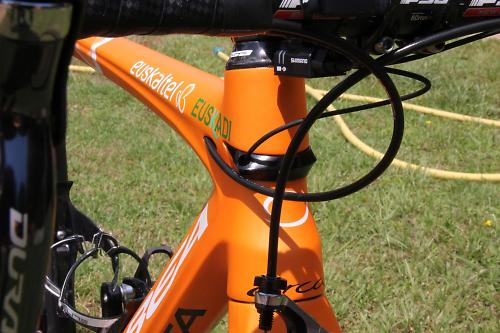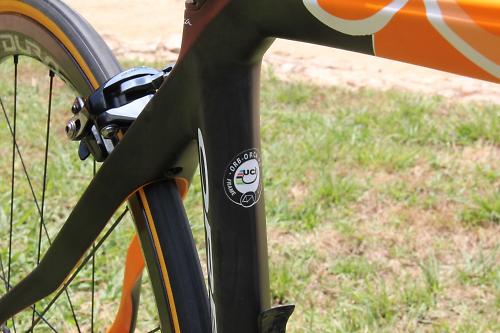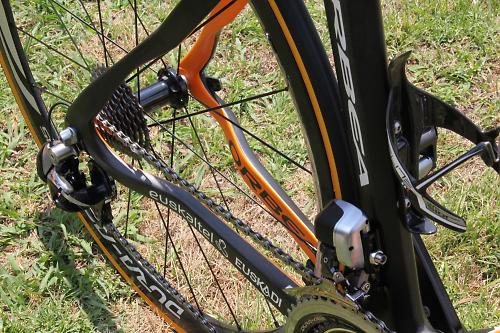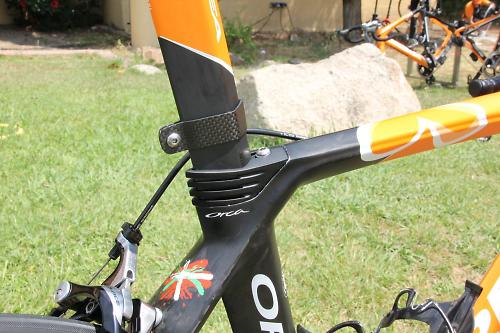- News
- Reviews
- Bikes
- Components
- Bar tape & grips
- Bottom brackets
- Brake & gear cables
- Brake & STI levers
- Brake pads & spares
- Brakes
- Cassettes & freewheels
- Chains
- Chainsets & chainrings
- Derailleurs - front
- Derailleurs - rear
- Forks
- Gear levers & shifters
- Groupsets
- Handlebars & extensions
- Headsets
- Hubs
- Inner tubes
- Pedals
- Quick releases & skewers
- Saddles
- Seatposts
- Stems
- Wheels
- Tyres
- Tubeless valves
- Accessories
- Accessories - misc
- Computer mounts
- Bags
- Bar ends
- Bike bags & cases
- Bottle cages
- Bottles
- Cameras
- Car racks
- Child seats
- Computers
- Glasses
- GPS units
- Helmets
- Lights - front
- Lights - rear
- Lights - sets
- Locks
- Mirrors
- Mudguards
- Racks
- Pumps & CO2 inflators
- Puncture kits
- Reflectives
- Smart watches
- Stands and racks
- Trailers
- Clothing
- Health, fitness and nutrition
- Tools and workshop
- Miscellaneous
- Buyers Guides
- Features
- Forum
- Recommends
- Podcast
TECH NEWS
Tour Tech 2013: Orbea Orca gets lighter and more aero + video
Spanish manufacturer Orbea have updated their flagship Orca, which celebrates its 10th birthday this year, with a lighter frame, new fork, increased aerodynamics and with seven sizes based around stack and reach. Euskaltel-euskadi will be racing it in the Tour de France, we spotted the team preparing the bike ahead of the opening stage.

The Orca was first conceived ten years ago, and won a gold medal in the Beijing 2008 Olympics courtesy of Samuel Sánchez. Orbea have worked hard on evolving the design of the bike, it’s been through five design iterations in those years, and this new model represents a significant step forward.

Fit and choosing the correct frame size is crucial when buying a road bike. Orbea recognise this in the adoption of the Stack and Reach concept of measuring a frame. They’re not the first, several other manufacturers such as Cervelo have been pushing stack and reach over more traditional measurements to determine the frame size you need (such as top tube and seat tube).

Stack is the vertical distance from the centre of the bottom bracket to the top of the head tube. Reach is the horizontal measurement from the centre of the bottom bracket to the centre top of the head tube. In an industry where bike manufacturers all measure their frames differently, stack and reach makes it all a lot simpler to compare sizing from brand to brand.

So Orbea are using this new approach for the Orca, and will offer seven sizes, from 47 to 60cm. They use two different forks, a 53mm rake on the three smaller sizes and 43mm rake on the four biggest sizes.

Aerodynamics is the hottest buzzword in the industry this year, and the Orca has been redesigned to reduce drag. They’ve worked at reducing the frontal area, keeping the head tube and the new fork narrow. All cables are routed internally, and their new EC/DC (Electronic cable, direct cable) ensures the frame is compatible with electronic and mechanical groupsets. The result of these changes makes it 7% more aerodynamic than the previous Orca, giving a claimed 10 watt saving at a 10° yaw angle (though they don’t tell us what speed this data was determined at).

Despite a new interest in aerodynamics, Orbea have also made other changes to the frame to deliver an improvement in weight and stiffness. They claim it’s 10% lighter (which will satisfy Euskaltel-euskadi’s climbers) and 8% stiffer. One of the key changes has been to adopt a Shimano PressFit bottom bracket, removing some of the aluminium inserts needed for traditional threaded bottom brackets. The frame retains many of the signature features that made it an Orbea, such as the seatclamp and dropouts.

The Euskaltel-euskadi team bikes are finished in the same distinctive orange over black that makes them easy to spot in the blur of the peloton. They’re sponsored by Shimano so it’s a brand new Dura-Ace Di2 9070 11-speed groupset . One change Orbea haven’t made is to use Shimano’s new internal Di2 battery, it instead being bolted to the non-driveside chainstay.

Wheels are Shimano too, pictured are the C35 tubulars, a popular wheel with good aerodynamics and weight, but they’ll have plenty of wheels to choose from depending on the stage profile. FSA supply the handlebars and stem, Vittoria the Corsa Evo tyres and Selle Italia the SLR saddle.
And a couple of fancy videos of the new bike
This follows the release the other week of the new Avant from Orbea, billed as the 'the most adaptable bike ever seen' that accepts discs or rim brakes and either mechanical or electronic shifting. Read about it here.
David worked on the road.cc tech team from 2012-2020. Previously he was editor of Bikemagic.com and before that staff writer at RCUK. He's a seasoned cyclist of all disciplines, from road to mountain biking, touring to cyclo-cross, he only wishes he had time to ride them all. He's mildly competitive, though he'll never admit it, and is a frequent road racer but is too lazy to do really well. He currently resides in the Cotswolds, and you can now find him over on his own YouTube channel David Arthur - Just Ride Bikes.
Latest Comments
- Secret_squirrel 4 hours 47 min ago
Um...no. Spitting is grim and there is never any excuse.
- Another_MAMIL 7 hours 43 min ago
Q36.5 Gregarius Essential Bib Knickers fit the bill: 3/4 length bib tights for warm weather.
- Rendel Harris 7 hours 54 min ago
Jolly good. Only it hasn't been and it is still a public bridleway. Feel free to look it up.
- jaymack 8 hours 44 min ago
"...it feels more like a £100+ jersey". It's almost as if cycling apparel is over priced.
- mike the bike 9 hours 56 min ago
I've had a few Lezyne bits and bobs over the years and while it's true I've never bothered to return anything under warranty, I've had a couple of...
- mark1a 8 hours 59 min ago
There's a transition period. For the benefit in kind (BIK) tax to the employee, it will be treated as a goods vehicle as it is now (rather than a...
- hawkinspeter 10 hours 8 min ago
Parents say East Bristol Liveable Neighbourhood makes roads '100 times safer' for children:...
- mdavidford 10 hours 14 min ago
Isn't basically all carbon recycled? From stars?
- velodinho 11 hours 30 min ago
As witnessed at so many infrastructure improvement projects similar to this one, all those who object should ignore the consultation and pray at...
- Nagai74 13 hours 18 min ago
It's a DLO to those in the trade.



























Add new comment
2 comments
The wife and i have just each bought the Orca, we had the 2013 version electronic and what a ride, we would recommend them to anybody, if you do think of purchasing one get the bike fit from your local dealer as we had it at Terry Wrights Market Deeping, and they done us proud and we are now posting the best times we have ever done, The Orca is stiff where it needs to be but still has the whip where it is needed.
+1 for stack and reach.